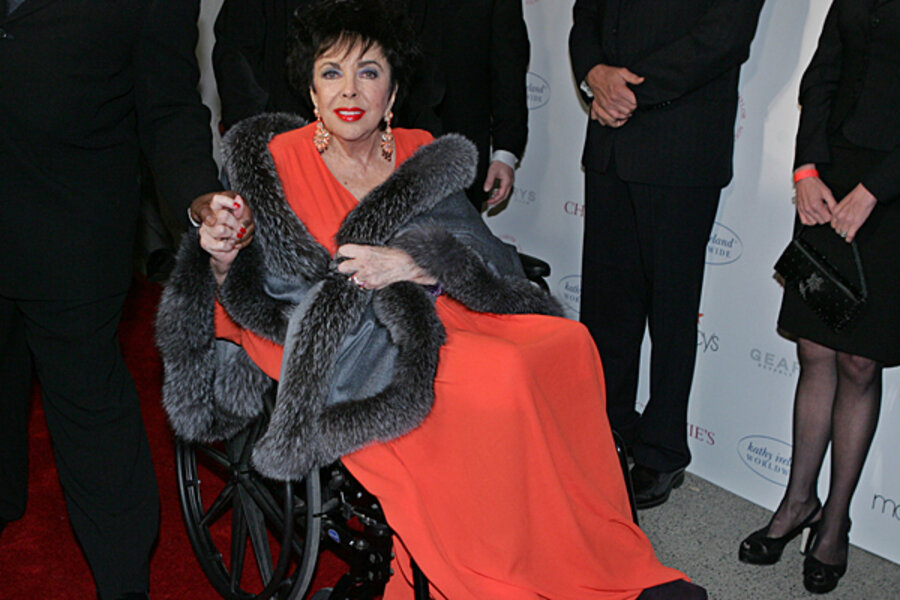How Elizabeth Taylor invented modern celebrity
Loading...
| Los Angeles
Hollywood legend Elizabeth Taylor had a life full of milestones.
The striking British beauty was one of the first child performers to make a seamless transition into adult stardom – a feat even the wildly successful, tap-dancing hit tot of the 30’s, Shirley Temple, could not manage. Ms. Taylor was also the first actress to pull down a million-dollar payday – for her role in Cleopatra.
But it was her uncanny understanding of the camera that led to her most important singular contribution, says Chris Auer, chair of the Film & Television department at the Savannah College of Art and Design.
“Taylor paved the way for the modern concept of what it means to be a public celebrity,” he says.
Taylor was able to adopt of the HIV-AIDS cause in the mid-'80s – long before it was a national health issue or even spoken of at private functions – “because she understood the power of the camera," Mr. Auer says. "She knew where to stand, and how to throw focus to whatever was behind her in the shot.”
As her commitment to the issue grew, she brought the power of the media to the topic, he says.
Before Taylor, celebrities were involved in meaningful charities, says Nancy Schoenberger, coauthor of "Furious Love," the 2010 book on Taylor and Richard Burton. Big stars such as Frank Sinatra gave generously to many charities, “but he did it very privately,” she says.
Taylor not only waded into an issue that had not been carefully vetted by handlers, but one that was wildly off the cultural radar. “AIDS was a frightening thing to many,” Ms. Schoenberger says. But, through the force of her drawing power and financial support, Taylor forced the public to see an entire community that had been in the shadows. All her life she had resented the intrusion of her fame until she understood that it could be used to do good, Schoenberger adds.
“Taylor has the classic qualities of a hero,” says Frank Farley, a psychologist at Temple University in Philadelphia, who has been involved in cross-discipline studies of heroism for many years.
The two most important qualities are risk-taking and generosity, he says. “She was clearly able to jump with both feet into issues that moved her,” he says, “with seemingly little if any regard for what others thought.”
He suggests that her early years were formative. It’s clear from her comments over the years that she bitterly resented being controlled by others. First, he points out, Taylor had a strong-willed stage mother, who put her under studio contract at the tender age of 9. The budding star chafed for years under various studio mantels, calling herself “studio chattel.”
It is no wonder, says Mr. Farley, that she developed the sort of stubborn determination to make her own choices later in life.
To those already engaged with the struggle at the time, Taylor’s involvement was pivotal, says Daniel Baxter, chief medical officer of the William F. Ryan Community Health network in New York City. “Elizabeth Taylor championed and comforted people living with AIDS long before it was fashionable or politically correct. She led by actions of love and concern,” he says via e-mail, “not just words.”
This model became a template for the modern celebrity, says David Heymann, author of “Liz: An Intimate Biography of Elizabeth Taylor.” “She changed the whole framework of Hollywood stardom,” he adds. Now, it’s de rigueur that if you are a major celebrity, you must have a major, and very public, charitable cause.





